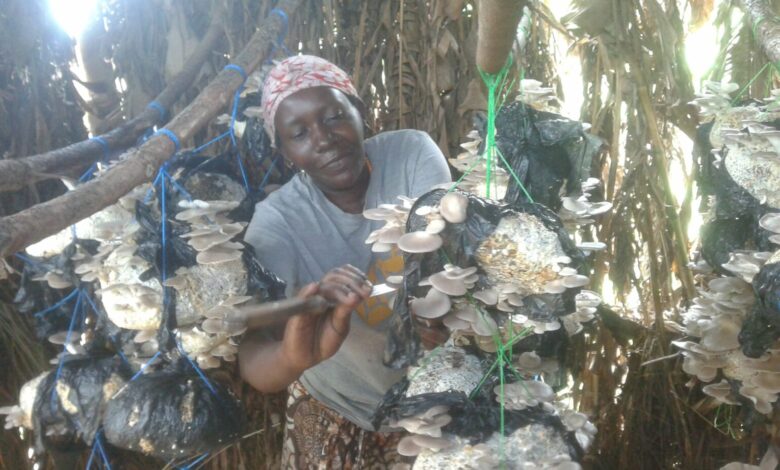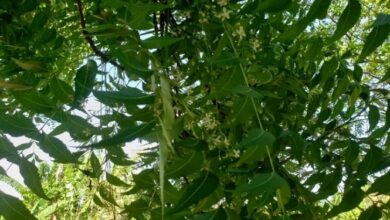Factors to consider before growing mushrooms

Feature: Certainly! Growing mushrooms can be a rewarding endeavor, but it requires attention to specific factors for successful cultivation.
Here are some key considerations:
- Understanding Mushroom Biology and Life Cycle: Before you start, learn about the different stages of mushroom growth, from spore germination to mycelium formation and fruiting. This knowledge helps you create the right conditions at each stage.
- Choosing the Right Mushroom Variety: Not all mushrooms are the same. Start with easier-to-grow varieties like oyster or button mushrooms if you’re a beginner. As you gain experience, explore more challenging types like shiitake or lion’s mane. Research each variety’s specific requirements regarding temperature, humidity, and substrate.
- Ensuring Proper Sterilization and Sanitation: Mushrooms are sensitive to contamination. Maintain a clean, sterile environment to prevent unwanted organisms. Research effective sterilization techniques and practice good sanitation throughout the growing process.
- Selecting the Ideal Growing Medium: Different mushrooms thrive on specific substrates like compost, straw, wood chips, or sawdust. Understand your chosen variety’s preferences and choose the appropriate growing medium accordingly.
- Learning about Fruiting and Harvesting Techniques: Familiarize yourself with the fruiting process, including stages like colonization, pinning, and fruiting. Maintain proper humidity levels, air circulation, and follow correct harvesting methods.
Remember to conduct thorough research, seek guidance from experts, and adapt your techniques for optimal results.
Common mistakes to avoid when growing mushrooms
Here are some common mistakes to avoid when growing mushrooms:
- Inadequate Sterilization: Insufficient sterilization of your growing medium can lead to contamination by competing organisms. Make sure to thoroughly sterilize your substrate using appropriate methods (e.g., pressure cooking, steam sterilization) to prevent contamination.
- Poor Ventilation: Mushrooms require fresh air for proper growth. Inadequate ventilation can lead to slow growth or malformed fruiting bodies. Ensure proper air exchange in your growing environment.
- Incorrect Humidity Levels: Maintaining the right humidity is crucial. Too much humidity can cause mold, while too little can hinder mushroom development. Invest in a reliable hygrometer and mist your growing area as needed.
- Improper Lighting: While mushrooms don’t need direct sunlight, they do require some light for proper development. Indirect natural light or low-intensity artificial light is sufficient. Avoid exposing them to strong, direct sunlight.
- Overhandling: Excessive handling of the growing substrate or fruiting bodies can introduce contaminants. Be gentle when handling mushrooms, especially during harvesting.
- Ignoring Temperature Requirements: Different mushroom species have specific temperature preferences. Research the ideal temperature range for your chosen variety and maintain it consistently.
- Skipping the Soaking Step: Some mushroom varieties (like shiitake) benefit from a soaking period before fruiting. Follow the recommended soaking instructions to encourage fruiting.
Remember, patience and attention to detail are essential for successful mushroom cultivation.
Best practices for maintaining humidity levels
Maintaining proper humidity levels is crucial for successful mushroom cultivation.
Here are some best practices:
- Use a Hygrometer: Invest in a reliable hygrometer to monitor humidity accurately. Aim for a relative humidity (RH) of 90%–95% during the colonization and fruiting stages.
- Misting: Regularly mist the growing area with clean water to maintain humidity. Use a fine mist to avoid disturbing the substrate or mushrooms.
- Fruiting Chamber Design: If you’re growing mushrooms indoors, create a fruiting chamber. Line it with plastic or use a clear container with holes for air exchange. Place a wet sponge or perlite inside to increase humidity.
- Humidifiers: Consider using a small humidifier to regulate humidity levels. Adjust it based on the specific requirements of your mushroom variety.
- Fanning: Proper air exchange prevents excessive moisture buildup. Gently fan the growing area a few times a day to refresh the air.
How to prevent mold growth in a humid environment
Preventing mold growth in a humid environment involves several key strategies.
Here are some effective tips:
- Control Humidity Levels: Use dehumidifiers to maintain indoor humidity below 50%. High humidity encourages mold growth, so keeping it in check is essential.
- Improve Air Circulation: Use fans, open windows, and exhaust systems to enhance airflow. Proper ventilation helps reduce moisture buildup.
- Promptly Repair Water Leaks: Address any leaks or water damage promptly. Moisture is a breeding ground for mold, so fixing leaks is crucial.
- Choose Mold-Resistant Materials: In areas prone to high humidity (such as bathrooms), opt for materials that resist mold growth.
- Regular Cleaning and Maintenance: Regularly clean and inspect your home to identify and eliminate potential moisture sources.
Remember, vigilance and proactive measures are key to preventing mold in humid climates!
Do you have an advertisement or an article you want to publish? Mail us at theugreports@gmail.com or WhatsApp +256394700683.






